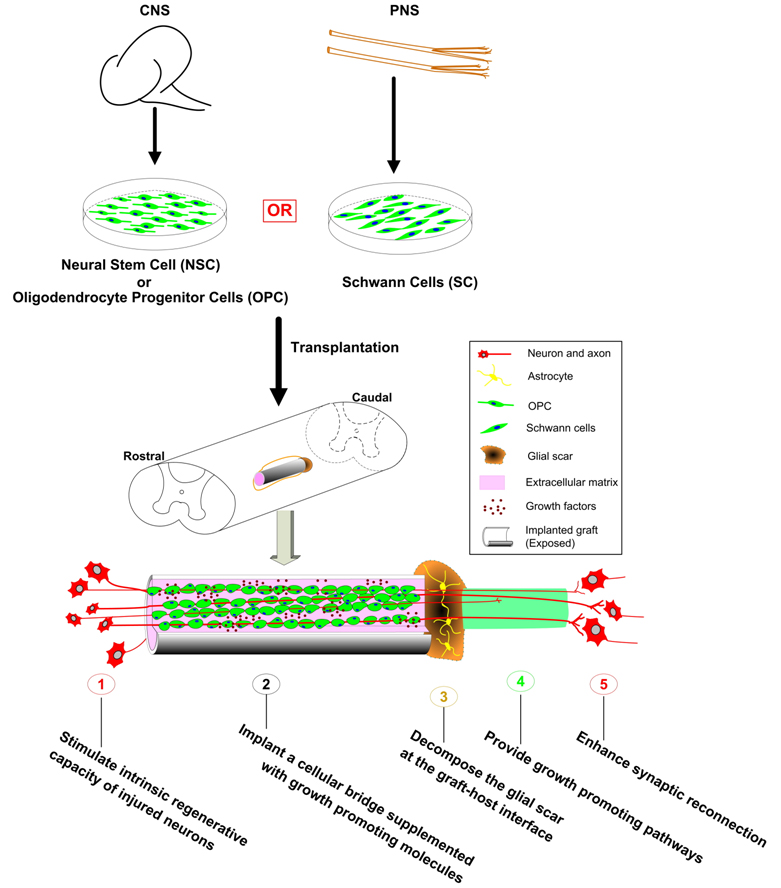Fig. 3.

Combinatorial strategies for regeneration of the injured CNS. Both centrally- (such as NSCs or OPCs) or peripherally- (such as Schwann cells) derived cells can be used for transplantation into the CNS. These cells can be combined with other strategies such as boosting the intrinsic regenerative capacity of injured neurons, decomposing the glial scar at the graft-host interfaces, generating growth promoting pathways in the distal host spinal cord, and enhancing synaptic reconnection between regenerating axons and their targets to achieve better anatomical regeneration and functional recovery after various CNS injuries. (Adapted from He and Xu, Chapter 29, Regeneration and Transplantation, In Neuroscience (Han JS and Poo M-M, Eds) (In Press).
